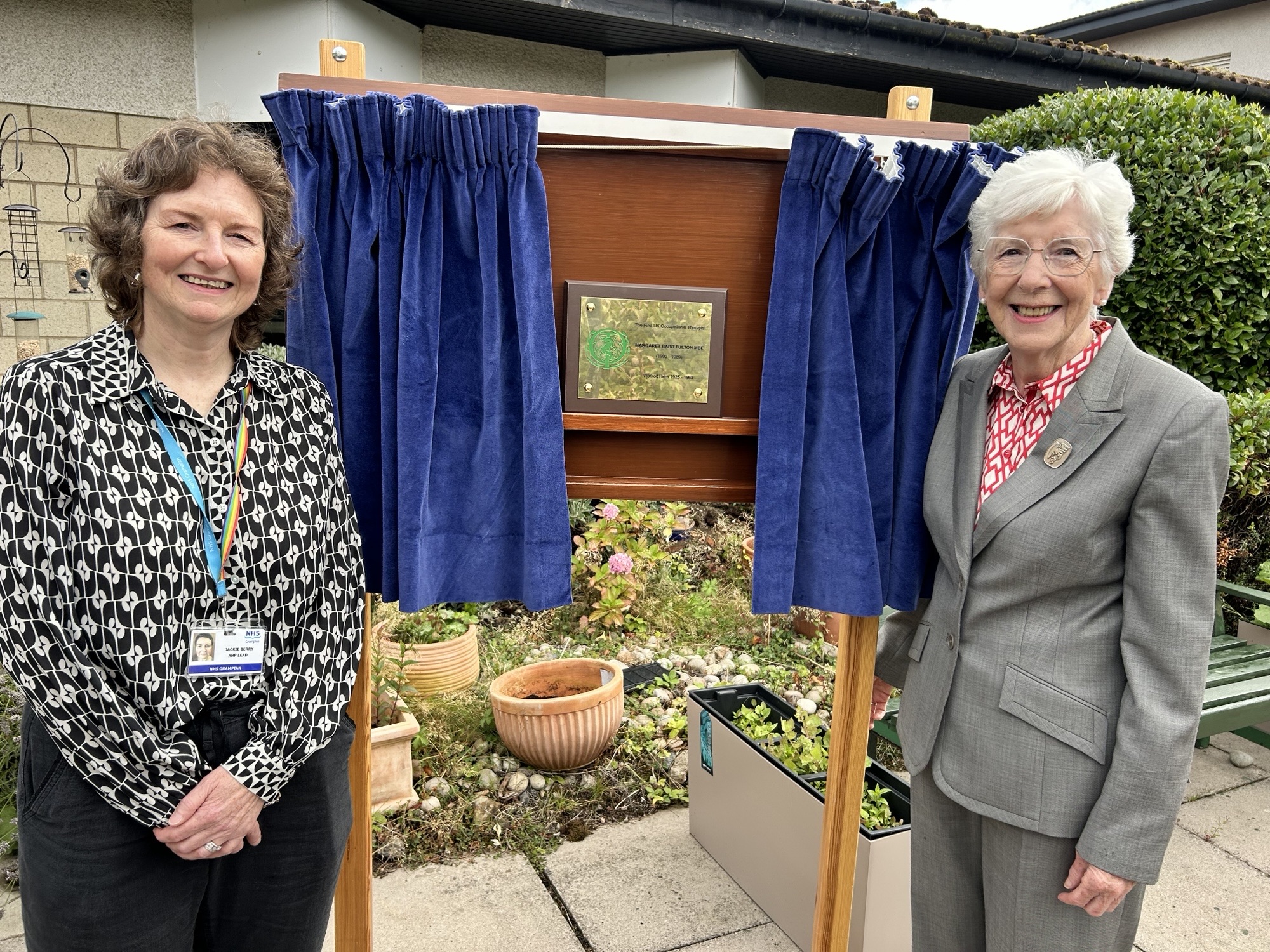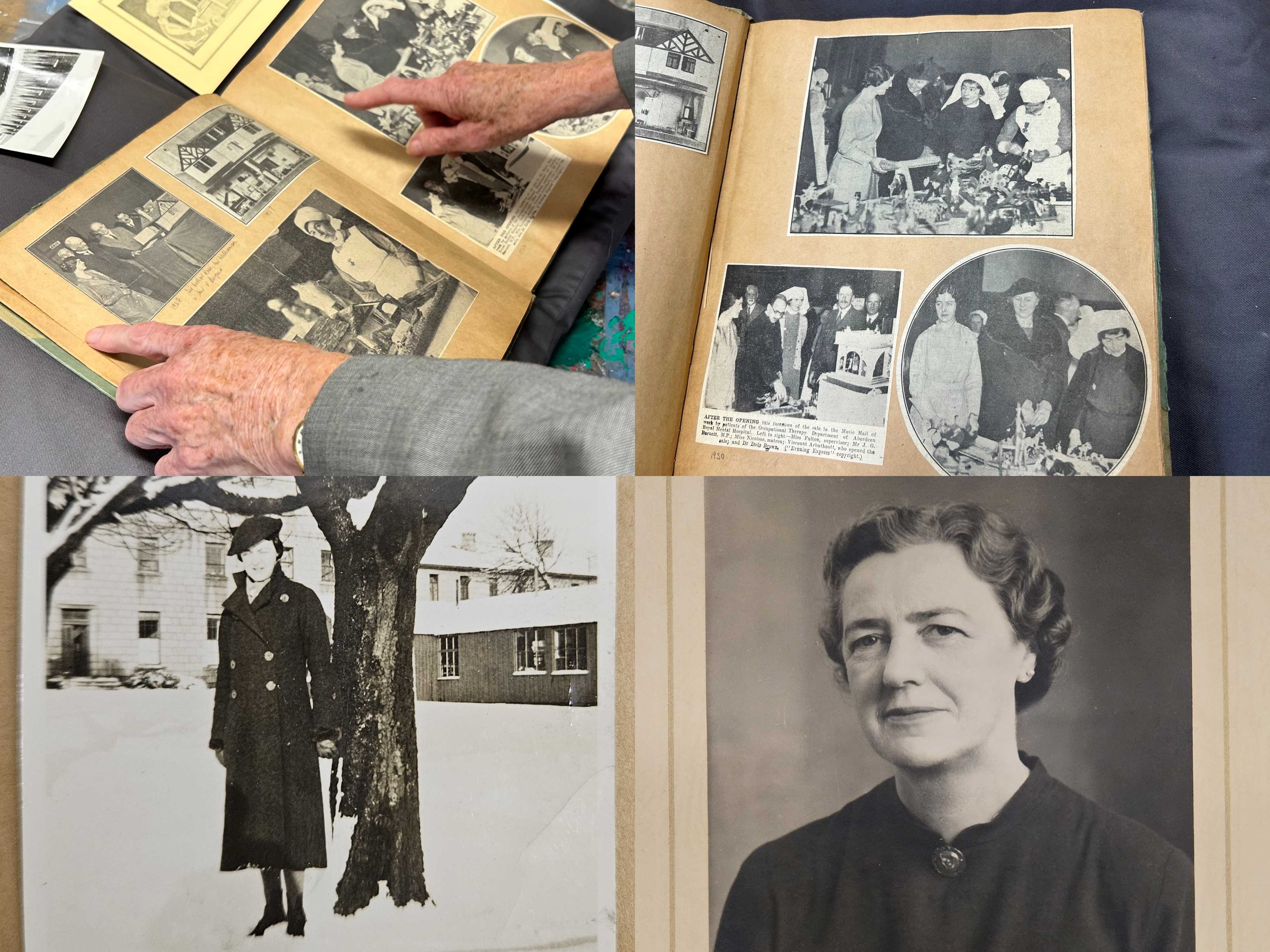100 years since UK's first qualified occupational therapist took up post in Aberdeen
Published: 12/09/2025 18:00A plaque has been unveiled at a north-east hospital to mark 100 years since the UK’s first qualified occupational therapist started work in the region.
In 1925 Margaret Barr Fulton MBE took on the role at what was then the Aberdeen Royal Asylum and went on to gain international recognition for her department until her retirement in 1963. In those early years, while the benefits of ‘occupation’ – usually gardening or working in the outdoors – were already considered therapeutic, 25-year-old Ms Fulton had the opportunity to shape the occupational therapy profession into what it is today.
Recognised for her dynamism, sense of humour, enthusiasm, creativity and resourcefulness, Margaret, or ‘Peg’ as she was known to friends, led the development of classes in a newly erected army hut in the hospital grounds. By 1926, commissioners recorded that 115 patients were attending the ‘Hut’ for classes which lasted an hour.
As she reflected later in her career: “The success we had with these cases was due to the sudden impact of a new idea and the whole changing attitude to the mental patient.”
By 1927, Margaret was leading exhibitions to give the medical world insight into occupational therapy and to educate the public about mental illness. From weaving to woodwork, and bookbinding to jewellery making, Margaret was a talented crafter who made it her mission to find ways to engage her vulnerable patients in whichever activities sparked their interest.
Her friend and colleague, Dr Catherine Paterson MBE, who first met ‘Peg’ when she was persuaded to become chairman of the Council of the Scottish Association of Occupational Therapists in 1968, went on to study and write about Margaret’s pioneering success, and gave a eulogy at her funeral in 1989.
Catherine recounts: “During the Second World War, bombs demolished part of the hospital, killing one patient and three members of staff. This did not stop Peg from getting on her bicycle and playing piano for her patients to keep them calm and cheerful during the raids. Her signature tune for signing off was ‘It’s foolish but it’s fun.’
“With no effective medications available to support mental health until the 1950s, it is difficult to imagine the challenge and skill required to engage patients in activities while deep in depression or suffering with psychosis. But Peg achieved that.
“She became fully aware of the value of humour. She hoped that modern day OTs could still incorporate a sense of fun into their treatment. She knew just what to say and when to say it to help people to cope.
“She was so perceptive, kind and thoughtful, always seeing the best in people and never passing an opportunity to help develop people’s talents.”
Margaret was born in 1900 in Manchester, where her dad was a GP. Both of her parents were Scottish and when her father passed away in 1919, she and her mother went to America to visit relatives. It was there she met a lady who put her in touch with Philadelphia School of Occupational Therapy, which had been founded a year earlier to rehabilitate soldiers.
After a year of study, Margaret completed placements in a children’s hospital, general hospital and psychiatric hospital before going on to take a position at the Metropolitan Hospital, New York. Many years later, in her memoirs, she recalls meeting a young man who had been gassed in World War I, a child who had been set alight by her brother, an infamous murderer, a brilliant pianist and a patient who liked to be called Senator.
When she returned to the UK in 1924, Margaret spent seven months looking for work before being put in touch with then Dr (later Sir) David Henderson in Glasgow who had worked with colleagues in the US. Having already employed an unqualified occupational therapy instructor, Henderson contacted Dr Dods Brown, medical superintendent of the Aberdeen Royal Asylum who sent an urgent telegram message to Margaret to accept no other post while he set out to persuade the Asylum Board to employ her.
Jackie Berry, Occupational Therapy Lead for Mental Health & Learning Disability Services in NHS Grampian today, commented: “Margaret was undoubtedly a trailblazer in our profession, when it was a very new role in health care. She proved the worth of occupational therapists in those early days and helped build the foundations of what we have now. Margaret recognised the relationship between therapist and patient is central to the therapeutic process.
“Back then, a century ago, the Royal Aberdeen Asylum would have been a very different place to work and be a patient. There is no doubt that Margaret supporting patients as she did would have been of great benefit to everyone around her, at a time when mental illness was much less understood than it is now.”
Seven years after Margaret took up post in the Granite City, there were 11 women working in similar roles across Scotland and Margaret played a key part in creating the Scottish Association of Occupational Therapy, serving as secretary and treasurer, before becoming chair of the group in 1946.
She was also a founder of the World Federation of Occupational Therapists (WFOT) in 1952 and became its inaugural president. In 1954, following the success of the First International Congress of the WFOT bringing together almost 400 delegates from 21 countries, Margaret was awarded an MBE for her contribution to the profession.
In 1995, the Princess Royal, patron of the Royal College of Occupational Therapists, marked the opening of the Fulton Clinic and Memorial Garden, at the Royal Cornhill Hospital, in recognition of Margaret’s work. The new plaque is a further tribute during this centenary year and serves as an ongoing reminder of Margaret’s impressive contribution to services in Aberdeen and around the world.
Catherine added: “Peg pioneered the continued care of patients in the community and her legacy continues to inspire us today. When I first visited Royal Cornhill Hospital in 1978, some 15 years after Peg had retired, patients often asked if I knew Miss Fulton and their eyes would light up as they spoke of her. “Each of us who had the privilege to know her know well the glow that remained after you visited her – she made you feel good about yourself.”


